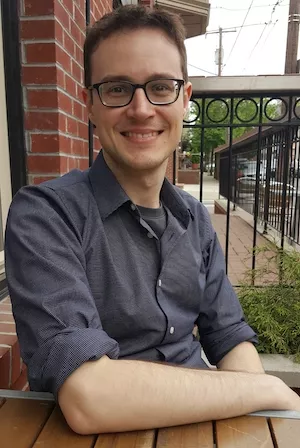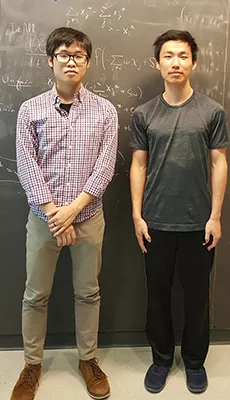Mathematician Victor Barranca to Explore Brain Function with NSF Grant

Assistant Professor of Mathematics and Statistics Victor Barranca has been awarded a National Science Foundation (NSF) grant to continue his work in uncovering the relationship between neuronal network structure and brain function.
"With the increasing prevalence of network models in the mathematical sciences, accurately measuring network connectivity and understanding its relationship with network function is of broad scientific importance," says Barranca.
Since measuring the connectivity of large neuronal networks remains a challenge experimentally and theoretically, Barranca is working to develop an accurate and efficient framework for network reconstruction.
The NSF grant, titled "Compressive Sensing and Neuronal Network Structure-Function Relationships," will support his efforts to further understand brain connectivity and neuronal computation, says Barranca. His work will make use of recent advances in a branch of signal processing theory known as compressive sensing to take advantage of the sparse structure of brain networks in recovering their connectivity. Considering that sparsity is ubiquitous across many biological and social systems, Barranca’s sparsity-based reconstruction framework has wide appeal, and it may provide new insights into sensory processing as well as abnormal brain function.
"I feel honored and deeply thankful for the NSF funding my research," says Barranca. "I am particularly grateful for the award, which will promote significant advancements in my research program as well as integrate students into all phases of research, from designing mathematical methodologies to presenting in conferences to publishing papers."
The research integrates perspectives from mathematics, computer science, engineering, and biology.
"This encourages interdisciplinary collaboration," Barranca says, "and deepens the mathematical training of a diverse spectrum of Swarthmore students."

Bill Huang '19 and Genji Kawakita '20
One of those students is Genji Kawakita '20, a mathematics major from Tokyo. Kawakita and Bill Huang '19, a mathematics major from Kansas City, Mo., who is also working with Barranca, have contributed by using mathematical models to characterize the role of brain structure in decision making.
"I really appreciate the close mentorship with Professor Barranca," says Kawakita. "I have not only gained knowledge on computational neuroscience, but also learned a unique attitude toward research." One of Kawakita’s responsibilities is to code network analysis programs to investigate and visualize model simulation data, which is key in interpreting the dynamics of neuronal networks.
The research process is intellectually gratifying, Barranca says, especially when mathematical approaches yield novel insights into the natural world. "It is even more gratifying when research findings may have tangible applications in experimental frameworks or, for example, potentially advance human mental health care," he says. "The opportunity to learn and use mathematics to solve intriguing scientific problems is one of the most exciting and central aspects of my work."
Though still a relatively young field, mathematical neuroscience is quickly growing. "There is a great deal of new and important problems to investigate," he says. "The way in which mathematics consistently provides such clean and elegant characterizations of the natural world never ceases to surprise me."
And the opportunity to work closely with Swarthmore students is especially rewarding, says Barranca. "It amazes me how far students can come in their training toward becoming professional mathematical scientists over the course of even a single summer," he says. "While it is clear that students at Swarthmore are exceptional from their classwork, seeing them make real and creative contributions to the research process is especially fulfilling."
To learn more about how Swarthmore is investing in its vibrant intellectual culture, visit lifechanging.swarthmore.edu.



